Elephant therapy for depression?
Researchers from Chiang Mai University have a new means of fighting phobias and depression. Pachaderms. Dr. Audomsark Haesungcharern, the dean of CMU believes their voice has therapeutic qualities citing studies which have found elephant calls containing both infra sound, a relaxing tone, and ultra sound, which creates active emotions.
Just last year an elephant study with autistic children suggested an improvement in a number of areas, such as self-reliance and social reactions. This has encouraged us to continue the study into how the elephants can help relieve the symptoms [of certain mental disorders],” said Dr Audomsark.
Many medical researchers worldwide have found animal-assisted therapy to be of benefit to autistic people. Horses, dogs and dolphins are considered to have potential in this regard. Prasop Tipprasert, the FIO’s elephant specialist, said the centre had trained 20 elephants to work with children and that safety is the most important concern, so all elephants are tamed and kept under close supervision.
Depression Meds May Be Prescription for Bad Driving
A new study dubbed “The Effects of Antidepressants on Cognitive and Driving Performance,” by Holly J. Dannewitz, Ph.D., and Thomas Petros, Ph.D., psychologists at the University of North Dakota, measured the driving skills of 60 people; 29 who were not medicated (other than contraceptives in some cases) and 31 who were taking at least one type of antidepressant. The group taking antidepressants was further divided into those who scored higher or lower on a test of depression. The researchers observed the participants’ steering, concentration, and scanning abilities as they made a series of common driving decisions, such as reacting to brake lights, stop signs or traffic signals while being distracted by animals, other cars, pylons, speed limit signs, helicopters or bicyclists.
The group that was both depressed (scoring high on the depression test) and taking antidepressants performed far worse than the control group on several tasks. They were found to lack concentration, as well as the overall ability to control the car. But participants who were taking antidepressants and were not depressed (scoring in the normal range on the test) performed about the same as those who were not medicated. The team believes it could be either the medication itself or the condition that caused the problems. “We already know that depression causes concentration problems,” said study author Holly J. Dannewitz, according to HealthDay News. “And now it appears that people taking antidepressants who also have relatively higher depression scores fare significantly worse when attempting to perform a computerized simulation of driving.”
This research is significant considering that the number of Americans taking antidepressants has tripled over the past decade. According to government statistics, 1 in 10 women currently takes some form of antidepressant medication. Dr. Dannewitz said that while there needs to be a larger study on the issue, “there certainly seems to be some sort of link” between depression, antidepressants and driving. “I think people who are depressed, especially those on antidepressants, should be aware of this if they are driving or doing anything that relies on concentration and reaction skills,” Dr. Dannewitz said.
The study findings were presented at the Annual Convention of the American Psychological Association in Boston on August 17.
The Oxytocin Connection – Part 1
Oxy…what?
 I’d heard about oxytocin a few years ago in the context that it was the “magical” hormone that bonded a couple together. The oxytocin effect, from the little I knew about it, was that indefinable something that made it more difficult for a woman to leave a lover after they’d done the deed. It seemed to me to be quite mysterious and alluring. Between all the hormones that Nature gave us, there was oxytocin…the “fun” hormone. It didn’t carry the baggage of estrogen or the brute force of testosterone. It wasn’t responsible for putting you to sleep like melatonin, stressing you out like cortisol or causing controversy like human growth hormone. Oxytocin was all about pleasure, love, bonding, empathy and trust.
I’d heard about oxytocin a few years ago in the context that it was the “magical” hormone that bonded a couple together. The oxytocin effect, from the little I knew about it, was that indefinable something that made it more difficult for a woman to leave a lover after they’d done the deed. It seemed to me to be quite mysterious and alluring. Between all the hormones that Nature gave us, there was oxytocin…the “fun” hormone. It didn’t carry the baggage of estrogen or the brute force of testosterone. It wasn’t responsible for putting you to sleep like melatonin, stressing you out like cortisol or causing controversy like human growth hormone. Oxytocin was all about pleasure, love, bonding, empathy and trust.
Where was the struggle in that? Where was the stress? Where was the built in fear? Could it be that Nature had provided a hormone that activated all the magnificent things in life that made us feel good about waking up and walking into the day with renewed energy and adventure? Was it really possible that, through oxytocin, we could tap into the most beautiful, life-affirming sensation imaginable? The answer is yes. A resounding yes.
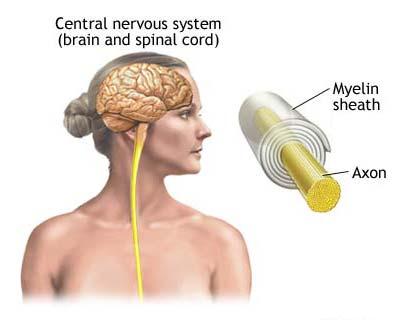 I didn’t think much more about this exceptional hormone until I was doing research for another book and I ran across an article quite by accident that touted natural ways to induce oxytocin in the body. Sexual intercourse, massage and meditation were top on the list. Reading further, I learned that a few very ingenious companies were investigating the use of oxytocin in a homeopathic form. Since injectable oxytocin has a short lifespan in the body (and because injecting anything in my body is not something I would relish) and since ingesting oxytocin in a pill is worthless since the hormone is destroyed by stomach acid, I surmised that the homeopathic delivery was an interesting possibility. As someone who has studied homeopathy for some time, I understand the “like cures like” approach and have personally experienced many positive resolutions to health problems using homeopathic remedies. So, yes, homeopathic oxytocin made sense to me. If anything, I wanted to try it and see if it could be used as an accelerant — a non-toxic, natural way to wake up my body’s reserves of oxytocin.
I didn’t think much more about this exceptional hormone until I was doing research for another book and I ran across an article quite by accident that touted natural ways to induce oxytocin in the body. Sexual intercourse, massage and meditation were top on the list. Reading further, I learned that a few very ingenious companies were investigating the use of oxytocin in a homeopathic form. Since injectable oxytocin has a short lifespan in the body (and because injecting anything in my body is not something I would relish) and since ingesting oxytocin in a pill is worthless since the hormone is destroyed by stomach acid, I surmised that the homeopathic delivery was an interesting possibility. As someone who has studied homeopathy for some time, I understand the “like cures like” approach and have personally experienced many positive resolutions to health problems using homeopathic remedies. So, yes, homeopathic oxytocin made sense to me. If anything, I wanted to try it and see if it could be used as an accelerant — a non-toxic, natural way to wake up my body’s reserves of oxytocin.
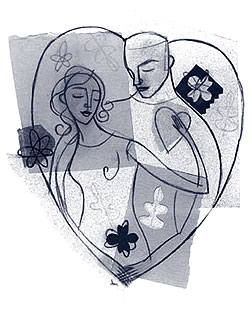 So, I gave it the ol’ college try. I’ve got an adventurous spirit and I’m always up for trying anything once. I experimented with various low potency homeopathic forms of oxytocin until I found one that really worked for me. I knew it worked because I felt this gentle shift happening inside of me. Low potency homeopathic medicines never shout their effects; rather, they kindly remind you where your body is supposed to be focusing and then your body gradually moves in that direction. That’s exactly what happened with the homeopathic oxytocin.
So, I gave it the ol’ college try. I’ve got an adventurous spirit and I’m always up for trying anything once. I experimented with various low potency homeopathic forms of oxytocin until I found one that really worked for me. I knew it worked because I felt this gentle shift happening inside of me. Low potency homeopathic medicines never shout their effects; rather, they kindly remind you where your body is supposed to be focusing and then your body gradually moves in that direction. That’s exactly what happened with the homeopathic oxytocin.
But I’m just one person. Maybe it was a placebo effect. That’s when I turned to my husband. What’s a good researcher without a reliable test subject? Since the man has been on the receiving end of countless natural remedies and professes to be a “professional guinea pig,” he agreed to give the oxytocin a trial. Now I could observe, like any good researcher, and watch for any subtle changes that the homeopathic oxytocin might produce.
 It didn’t take long. Within days, I noticed a profound deepening of my husband’s feelings toward me. It was as if he was re-connecting with a part of his senses that had been napping for a long time. Now they were suddenly reawakened. It wasn’t that he became the dreaded “New Age Sensitive Male.” Instead, the truest, best and most honest part that belonged only to him emerged and blossomed. All the static around his fears and concerns dialed down big time. I watched as he was able to explore new and creative solutions to resolve problems in his life.
It didn’t take long. Within days, I noticed a profound deepening of my husband’s feelings toward me. It was as if he was re-connecting with a part of his senses that had been napping for a long time. Now they were suddenly reawakened. It wasn’t that he became the dreaded “New Age Sensitive Male.” Instead, the truest, best and most honest part that belonged only to him emerged and blossomed. All the static around his fears and concerns dialed down big time. I watched as he was able to explore new and creative solutions to resolve problems in his life.
It motivated both of us to explore how to naturally activate oxytocin in our bodies. There was a renewed bond to life, love and the future. The closer bond we shared reminded both of us why we came together and why, with all the stress and uncertainty in our daily worlds, at the core of it all is the grace and power of love.
If that sounds woo-woo, so be it. When you begin to reconnect with your heart, it’s a powerful and life-affirming experience. The fact that Nature in her infinite wisdom saw fit to provide all of us with the hormone that could lead us in that direction is awe-inspiring. Use this book to find out how to experience this feeling for yourself and see how others have benefited from oxytocin.
Because here’s the best part of all: When you learn how to generate more oxytocin in your body, the glass isn’t just half full, it’s overflowing.
Oxytocin is an FDA controlled substance!
Click here to read about a sublingual Homeopatic formulation designed to enable the body to release and Accelerate its own Natural Oxytocin.
Oxytocin makes love blind?
 Can thinking wonderful thoughts about the one you love, make you less likely to find a new partner? A new study says so. The study involving 113 people in long term relationships were asked to view pictures of members of the opposite sex at which time they were asked to rate their attractiveness. Half of the group were then asked to write an essay professing their love for their significant other. The other half wrote about the happiest time in their lives. Those that wrote about their love for their significant other ruled out the most attractive people in photos when shown during the viewing portion of the study. The study respondents rejected the photos of the
Can thinking wonderful thoughts about the one you love, make you less likely to find a new partner? A new study says so. The study involving 113 people in long term relationships were asked to view pictures of members of the opposite sex at which time they were asked to rate their attractiveness. Half of the group were then asked to write an essay professing their love for their significant other. The other half wrote about the happiest time in their lives. Those that wrote about their love for their significant other ruled out the most attractive people in photos when shown during the viewing portion of the study. The study respondents rejected the photos of the  most attractive people said Dr. Jon Maner, a psychologist from Florida State University and leader the study. A current romantic perception of your partner may short circuit attraction to others Maner purports. Hence, the long held quote, “love truly may be blind”. The findings published in the journal Evolution and Human Behavior may suggest that our oxytocin production is why as humans may commit to a long term relationship with one person.
most attractive people said Dr. Jon Maner, a psychologist from Florida State University and leader the study. A current romantic perception of your partner may short circuit attraction to others Maner purports. Hence, the long held quote, “love truly may be blind”. The findings published in the journal Evolution and Human Behavior may suggest that our oxytocin production is why as humans may commit to a long term relationship with one person.
Oxytocin is an FDA controlled substance!
Prior exposure to oxytocin mimics the effects of social contact and facilitates sexual behaviour in females
 The purpose of this study was to determine whether pretreatment with oxytocin could mimic the effects of social contact and enhance sexual receptivity in female prairie voles. Female prairie voles require prolonged exposure to males to become sexually active and oxytocin has been shown to play a major role in the establishment of social bonds between males and females. Therefore, we hypothesized that prior exposure to exogenous oxytocin, in the absence of males, would enhance sexual activity in females. Two experiments were conducted to test this hypothesis. Experiment 1 examined the capacity of oxytocin to enhance sexual behaviour in females undergoing natural oestrus. Sexually naive female prairie voles
The purpose of this study was to determine whether pretreatment with oxytocin could mimic the effects of social contact and enhance sexual receptivity in female prairie voles. Female prairie voles require prolonged exposure to males to become sexually active and oxytocin has been shown to play a major role in the establishment of social bonds between males and females. Therefore, we hypothesized that prior exposure to exogenous oxytocin, in the absence of males, would enhance sexual activity in females. Two experiments were conducted to test this hypothesis. Experiment 1 examined the capacity of oxytocin to enhance sexual behaviour in females undergoing natural oestrus. Sexually naive female prairie voles  received a daily subcutaneous injection of 20 microg oxytocin or isotonic saline for 5 days before being placed with a sexually experienced male for 48 h. Females treated with oxytocin were significantly more likely to mate during this period than saline-treated females. In experiment 2 the ability of oxytocin to increase subsequent sensitivity of sexually naive females to oestradiol was tested. Females that received oxytocin pretreatment, as in experiment 1, followed by oestradiol displayed a significant increase in sexual receptivity when compared to females treated with saline and oestradiol or oestradiol only. The results supported the hypothesis that prior exposure to oxytocin can mimic the effects of social contact, and can facilitate sexual receptivity by increasing the sensitivity of females to very low doses of oestradiol.
received a daily subcutaneous injection of 20 microg oxytocin or isotonic saline for 5 days before being placed with a sexually experienced male for 48 h. Females treated with oxytocin were significantly more likely to mate during this period than saline-treated females. In experiment 2 the ability of oxytocin to increase subsequent sensitivity of sexually naive females to oestradiol was tested. Females that received oxytocin pretreatment, as in experiment 1, followed by oestradiol displayed a significant increase in sexual receptivity when compared to females treated with saline and oestradiol or oestradiol only. The results supported the hypothesis that prior exposure to oxytocin can mimic the effects of social contact, and can facilitate sexual receptivity by increasing the sensitivity of females to very low doses of oestradiol.
Cushing BS, Carter CS.
Department of Biology,
University of Maryland, College Park,
MD 20742, USA.
bc83@umail:umd.edu
J Neuroendocrinol 1999 Oct;11(10):765-9
Oxytocin is an FDA controlled substance!
formulation designed to enable the body to release and Accelerate its own Natural Oxytocin.
Oxytocin may mediate the benefits of positive social interaction and emotions
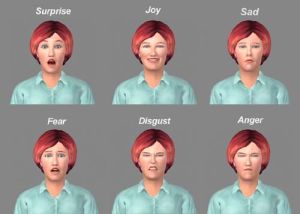 During breastfeeding or suckling, maternal oxytocin levels are raised by somatosensory stimulation. Oxytocin may, however, also be released by nonnoxious stimuli such as touch, warm temperature etc. in plasma and in cerebrospinal fluid. Consequently, oxytocin may be involved in physiological and behavioral effects induced by social interaction in a more general context. In both male and female rats oxytocin exerts potent physiological antistress effects. If daily oxytocin injections are repeated over a 5-day period, blood pressure is decreased by 10-20 mmHg, the withdrawal latency to heat stimuli is prolonged, cortisol levels are decreased and insulin and cholecystokinin levels are increased. These effects last from 1 to several weeks after the last injection. After repeated oxytocin treatment weight gain may be promoted and the healing rate of
During breastfeeding or suckling, maternal oxytocin levels are raised by somatosensory stimulation. Oxytocin may, however, also be released by nonnoxious stimuli such as touch, warm temperature etc. in plasma and in cerebrospinal fluid. Consequently, oxytocin may be involved in physiological and behavioral effects induced by social interaction in a more general context. In both male and female rats oxytocin exerts potent physiological antistress effects. If daily oxytocin injections are repeated over a 5-day period, blood pressure is decreased by 10-20 mmHg, the withdrawal latency to heat stimuli is prolonged, cortisol levels are decreased and insulin and cholecystokinin levels are increased. These effects last from 1 to several weeks after the last injection. After repeated oxytocin treatment weight gain may be promoted and the healing rate of  wounds increased. Most behavioral and physiological effects induced by oxytocin can be blocked by oxytocin antagonists. In contrast, the antistress effects can not, suggesting that unidentified oxytocin receptors may exist. The prolonged latency in the tail-flick test can be temporarily reversed by administration of naloxone, suggesting that endogenous opioid activity has been increased by the oxytocin injections. In contrast, the long-term lowering of blood pressure and of cortisol levels as well as the sedative effects of oxytocin have been found to be related to an increased activity of central alpha 2-adrenoceptors. Positive social interactions have been related to health-promoting effects. Oxytocin released in response to social stimuli may be part of a neuroendocrine substrate which underlies the benefits of positive social experiences. Such processes may in addition explain the health-promoting effects of certain alternative therapies. Because of the special properties of oxytocin, including the fact that it can become conditioned to psychological state or imagery, oxytocin may also mediate the benefits attributed to therapies such as hypnosis or meditation.
wounds increased. Most behavioral and physiological effects induced by oxytocin can be blocked by oxytocin antagonists. In contrast, the antistress effects can not, suggesting that unidentified oxytocin receptors may exist. The prolonged latency in the tail-flick test can be temporarily reversed by administration of naloxone, suggesting that endogenous opioid activity has been increased by the oxytocin injections. In contrast, the long-term lowering of blood pressure and of cortisol levels as well as the sedative effects of oxytocin have been found to be related to an increased activity of central alpha 2-adrenoceptors. Positive social interactions have been related to health-promoting effects. Oxytocin released in response to social stimuli may be part of a neuroendocrine substrate which underlies the benefits of positive social experiences. Such processes may in addition explain the health-promoting effects of certain alternative therapies. Because of the special properties of oxytocin, including the fact that it can become conditioned to psychological state or imagery, oxytocin may also mediate the benefits attributed to therapies such as hypnosis or meditation.
Uvnas-Moberg K
Department of Physiology and Pharmacology,
Karolinska Institute,
Stockholm, Sweden.
kerstin.uvnas-moberg@fyka.ki.se
Psychoneuroendocrinology 1998 Nov; 23(8):819-35
Oxytocin is an FDA controlled substance!
Role of oxytocin in the neuroadaptation
 Oxytocin (OXT), a neurohypophyseal hormone, has a wide range of behavioral effects outside its classic peripheral endocrine functions. OXT involvement in adaptive central nervous system processes has been demonstrated as an inhibitory, amnestic action on learning and memory in different paradigms. Because adaptation and learning are likely to be involved in the neural events leading to drug tolerance and dependence, the question logically arose whether OXT is able to influence the development of tolerance of and dependence on abused drugs. In this review, we summarize our results on the effects of OXT on opiate (including morphine, heroin, and the endogenous opiates beta-endorphin and enkephalin) tolerance and dependence, heroin self-administration, psychostimulant-induced behavioral changes, and behavioral tolerance and sensitization. The sites and mechanisms of action and the possible physiological role of OXT are also discussed. In the first part of this review the
Oxytocin (OXT), a neurohypophyseal hormone, has a wide range of behavioral effects outside its classic peripheral endocrine functions. OXT involvement in adaptive central nervous system processes has been demonstrated as an inhibitory, amnestic action on learning and memory in different paradigms. Because adaptation and learning are likely to be involved in the neural events leading to drug tolerance and dependence, the question logically arose whether OXT is able to influence the development of tolerance of and dependence on abused drugs. In this review, we summarize our results on the effects of OXT on opiate (including morphine, heroin, and the endogenous opiates beta-endorphin and enkephalin) tolerance and dependence, heroin self-administration, psychostimulant-induced behavioral changes, and behavioral tolerance and sensitization. The sites and mechanisms of action and the possible physiological role of OXT are also discussed. In the first part of this review the 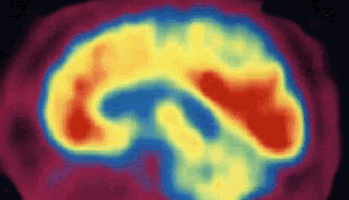 effects of exogenously administered OXT on both the acute and chronic behavioral effects of opiates and psychostimulants have been summarized. OXT inhibited the development of tolerance to morphine, heroin, beta-endorphin, and enkephalin, OXT also inhibited the development of cross-tolerance between the predominantly mu-agonist heroin and the predominantly delta-agonist enkephalin in mice. Naloxone-precipitated morphine withdrawal syndrome was also attenuated by OXT. Heroin self-administration was decreased by OXT administration in heroin-tolerant rats. OXT inhibited cocaine-induced exploratory activity, locomotor hyperactivity, and stereotyped behavior in rats and in mice. Behavioral tolerance to cocaine was also attenuated by OXT. On the contrary, OXT stimulated the development of behavioral sensitization to cocaine. OXT did not alter the stereotyped behavior induced by amphetamine. In the second series of experiments, the sites of action of OXT on drug-related behavior were investigated. Intracerebro-ventricular (ICV) and intracerebral (IC) administration of an OXT-receptor antagonist inhibited the effects of peripherally administered OXT on morphine tolerance, heroin self-administration, and cocaine-induced sniffing behavior.
effects of exogenously administered OXT on both the acute and chronic behavioral effects of opiates and psychostimulants have been summarized. OXT inhibited the development of tolerance to morphine, heroin, beta-endorphin, and enkephalin, OXT also inhibited the development of cross-tolerance between the predominantly mu-agonist heroin and the predominantly delta-agonist enkephalin in mice. Naloxone-precipitated morphine withdrawal syndrome was also attenuated by OXT. Heroin self-administration was decreased by OXT administration in heroin-tolerant rats. OXT inhibited cocaine-induced exploratory activity, locomotor hyperactivity, and stereotyped behavior in rats and in mice. Behavioral tolerance to cocaine was also attenuated by OXT. On the contrary, OXT stimulated the development of behavioral sensitization to cocaine. OXT did not alter the stereotyped behavior induced by amphetamine. In the second series of experiments, the sites of action of OXT on drug-related behavior were investigated. Intracerebro-ventricular (ICV) and intracerebral (IC) administration of an OXT-receptor antagonist inhibited the effects of peripherally administered OXT on morphine tolerance, heroin self-administration, and cocaine-induced sniffing behavior.  This suggests the central, intracerebral location of OXT target sites. Local IC microinjection of OXT in physiological doses into the posterior olfactory nucleus, tuberculum olfactorium, nucleus accumbens, central amygdaloid nucleus, and the hippocampus inhibited the development of tolerance to and dependence on morphine as well as cocaine-induced sniffing behavior and tolerance to cocaine. The physiological role of endogenous OXT in acute morphine tolerance has also been demonstrated, since OXT antiserum (ICV) and OXT-receptor antagonist (injected into the basal forebrain structures) potentiated the development of morphine tolerance. Finally, we investigated the possible mechanisms of action of OXT on drug related behavior. Both morphine tolerance and dependence, and cocaine administration, increased dopamine utilization in the mesencephalon and in the nucleus accumbens, respectively. OXT treatment decreased the alpha-methylparatyrosine-induced dopamine utilization in the mesencephalon and in the nucleus accumbens-septal complex. Chronic OXT treatment decreased the number of apparent binding sites of dopamine in the basal forebrain area. It also inhibited a cocaine-induced increase in dopamine utilization in the nucleus accumbens, but not in the striatum. In light of this information, it appears that OXT inhibits the development of opiate tolerance, dependence, and self-administration as well as the acute behavioral actions of and chronic tolerance to cocaine. This suggests the possible role of this neuropeptide in the regulation of drug abuse. Therefore, OXT may act as a neuromodulator on dopaminergic neurotransmission in limbic-basal forebrain structures to regulate adaptive CNS processes leading to drug addiction.
This suggests the central, intracerebral location of OXT target sites. Local IC microinjection of OXT in physiological doses into the posterior olfactory nucleus, tuberculum olfactorium, nucleus accumbens, central amygdaloid nucleus, and the hippocampus inhibited the development of tolerance to and dependence on morphine as well as cocaine-induced sniffing behavior and tolerance to cocaine. The physiological role of endogenous OXT in acute morphine tolerance has also been demonstrated, since OXT antiserum (ICV) and OXT-receptor antagonist (injected into the basal forebrain structures) potentiated the development of morphine tolerance. Finally, we investigated the possible mechanisms of action of OXT on drug related behavior. Both morphine tolerance and dependence, and cocaine administration, increased dopamine utilization in the mesencephalon and in the nucleus accumbens, respectively. OXT treatment decreased the alpha-methylparatyrosine-induced dopamine utilization in the mesencephalon and in the nucleus accumbens-septal complex. Chronic OXT treatment decreased the number of apparent binding sites of dopamine in the basal forebrain area. It also inhibited a cocaine-induced increase in dopamine utilization in the nucleus accumbens, but not in the striatum. In light of this information, it appears that OXT inhibits the development of opiate tolerance, dependence, and self-administration as well as the acute behavioral actions of and chronic tolerance to cocaine. This suggests the possible role of this neuropeptide in the regulation of drug abuse. Therefore, OXT may act as a neuromodulator on dopaminergic neurotransmission in limbic-basal forebrain structures to regulate adaptive CNS processes leading to drug addiction.
Sarnyai Z, Kovacs GL
Alcohol and Drug Abuse Research Center,
Harvard Medical School-McLean Hospital,
Belmont, MA 02178, USA.
Psychoneuroendocrinology 1994; 19(1):85-117
Oxytocin is an FDA controlled substance!
Click here to comment this article 
Research on plasma oxytocin in normal cycling women: investigating emotion and interpersonal distress
 The neurohormone oxytocin is responsible for initiating childbirth and the let-down reflex in lactating women and is released during sexual orgasm. Oxytocin has been thought of as an affiliation hormone because research on nonhuman mammals has demonstrated that it plays a key role in the initiation of maternal behavior and the formation of adult pair bonds. It has been speculated that social stimuli may induce oxytocin release and that oxytocin may make positive social contact more rewarding. Data are presented from an initial study to
The neurohormone oxytocin is responsible for initiating childbirth and the let-down reflex in lactating women and is released during sexual orgasm. Oxytocin has been thought of as an affiliation hormone because research on nonhuman mammals has demonstrated that it plays a key role in the initiation of maternal behavior and the formation of adult pair bonds. It has been speculated that social stimuli may induce oxytocin release and that oxytocin may make positive social contact more rewarding. Data are presented from an initial study to  examine change in plasma oxytocin in response to a standard imagery task that elicits emotion related to attachment. Twenty-five normal cycling, healthy women underwent imagery tasks and completed questionnaires on attachment and interpersonal problems. Blood draws (5 ml) were bone via an indwelling catheter before, during, and after three interventions (massage, positive emotion, and negative emotion) and to establish baselines. Overall, the data showed a tendency for
examine change in plasma oxytocin in response to a standard imagery task that elicits emotion related to attachment. Twenty-five normal cycling, healthy women underwent imagery tasks and completed questionnaires on attachment and interpersonal problems. Blood draws (5 ml) were bone via an indwelling catheter before, during, and after three interventions (massage, positive emotion, and negative emotion) and to establish baselines. Overall, the data showed a tendency for 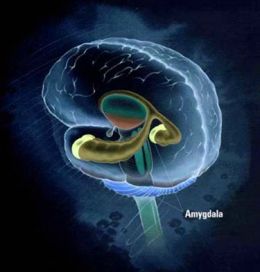 oxytocin levels to be elevated in response to relaxation massage and decreased in response to sad emotion. There were individual differences in response to the interventions. Those who showed evidence of increased oxytocin levels for positive emotion and massage and who maintained oxytocin levels during negative emotion were less likely to report interpersonal problems associated with intrusiveness. Maintaining oxytocin levels during sadness was also correlated with lower anxiety in close relationships. Women who were in a couple relationship had greater increases in oxytocin in response to positive emotion. In contrast, higher basal levels of oxytocin were associated with greater interpersonal distress. These data suggest that peripheral secretion of oxytocin in response to emotional stimuli is associated with the individual’s interpersonal characteristics.
oxytocin levels to be elevated in response to relaxation massage and decreased in response to sad emotion. There were individual differences in response to the interventions. Those who showed evidence of increased oxytocin levels for positive emotion and massage and who maintained oxytocin levels during negative emotion were less likely to report interpersonal problems associated with intrusiveness. Maintaining oxytocin levels during sadness was also correlated with lower anxiety in close relationships. Women who were in a couple relationship had greater increases in oxytocin in response to positive emotion. In contrast, higher basal levels of oxytocin were associated with greater interpersonal distress. These data suggest that peripheral secretion of oxytocin in response to emotional stimuli is associated with the individual’s interpersonal characteristics.
Turner RA, Altemus M, Enos T, Cooper B, McGuinness T
California School of Professional Psychology,
San Francisco, USA.
beckyt@itsa.ucsf.edu
Psychiatry 1999 Summer; 62(2):97-113
Oxytocin is an FDA controlled substance!
Click here to read about a sublingual Homeopatic formulation designed to enable the body to release and Accelerate its own Natural Oxytocin.
Click here to comment this article 
-
Recent
- John McCain’s speeches show signs of clinical depression, study finds
- My Experience with Oxytocin
- Oxytocin and infidelity – By Laurel Dewey
- Kirsten Dunst talks about depression
- Angelina Jolie may be suffering from post-partum depression. 3-Question Scale for uncovering Postpartum Depression
- Matthew Mitcham battles back from depression to win Olympic gold.
- Elephant therapy for depression?
- Depression Meds May Be Prescription for Bad Driving
- The Oxytocin Connection – Part 1
- Oxytocin makes love blind?
- Prior exposure to oxytocin mimics the effects of social contact and facilitates sexual behaviour in females
- Oxytocin may mediate the benefits of positive social interaction and emotions
-
Links
- HBC Protocols
- Brain antioxidant
- Confidence Rx
- 9 Types of Depressive Disorder
- Hangover – Anti Alcohol -Antioxidant
- Solution for mid life depression
- Acid Reflux
- Adrenal and Energy Health
- Alcoholism
- Anxiety
- Arthritis (Osteo)
- Bipolar Depression Natural Solution
- Brain Cognition Stimulators – Brain
- Bone & Joint Health
- Cellular Health
- Circulatory Cardio Issues
- Daily Multi-Vitamin
- Diabetes
- Depression & Emotional Mood
- Eye Health
- Fat Inhibitors and Thermogenic
- Female Hormone Replacement
- Hair Health
- Human Growth Hormone
- Inflammation and Allergies
- Insomnia
- Intestinal Health
- Liver Health
- Migraines
- Mood Swings
- Pancreas Support
- PMS
- Prostate Health
- Male and Female Sexual Energy
- Skin Rejuvenation
- Stress
- Thyroid Health
- Weight Control
- Confidence Rx – It’s ready when you are – Natural Sex pill
-
Archives
- September 2008 (6)
- August 2008 (8)
- July 2008 (12)
- June 2008 (17)
- May 2008 (11)
- April 2008 (1)
- March 2008 (62)
- February 2008 (95)
- January 2008 (5)
-
Categories
- 1
- 5-htp
- 7-keto
- anti-alcohol antioxidant
- antidepressants
- antioxidants
- anxiety
- brain antioxidant
- carbo blocker
- coral calcium
- Depression
- depression medication
- drugs
- Healt care
- help
- hgh patch
- hypericum
- idebenone
- lithium orotate
- postpartum
- SAMe 400
- Siberian Ginseng
- St John's wort
- teen
- treating depression
- treatment
- treatments
- vitamins
-
RSS
Entries RSS
Comments RSS




